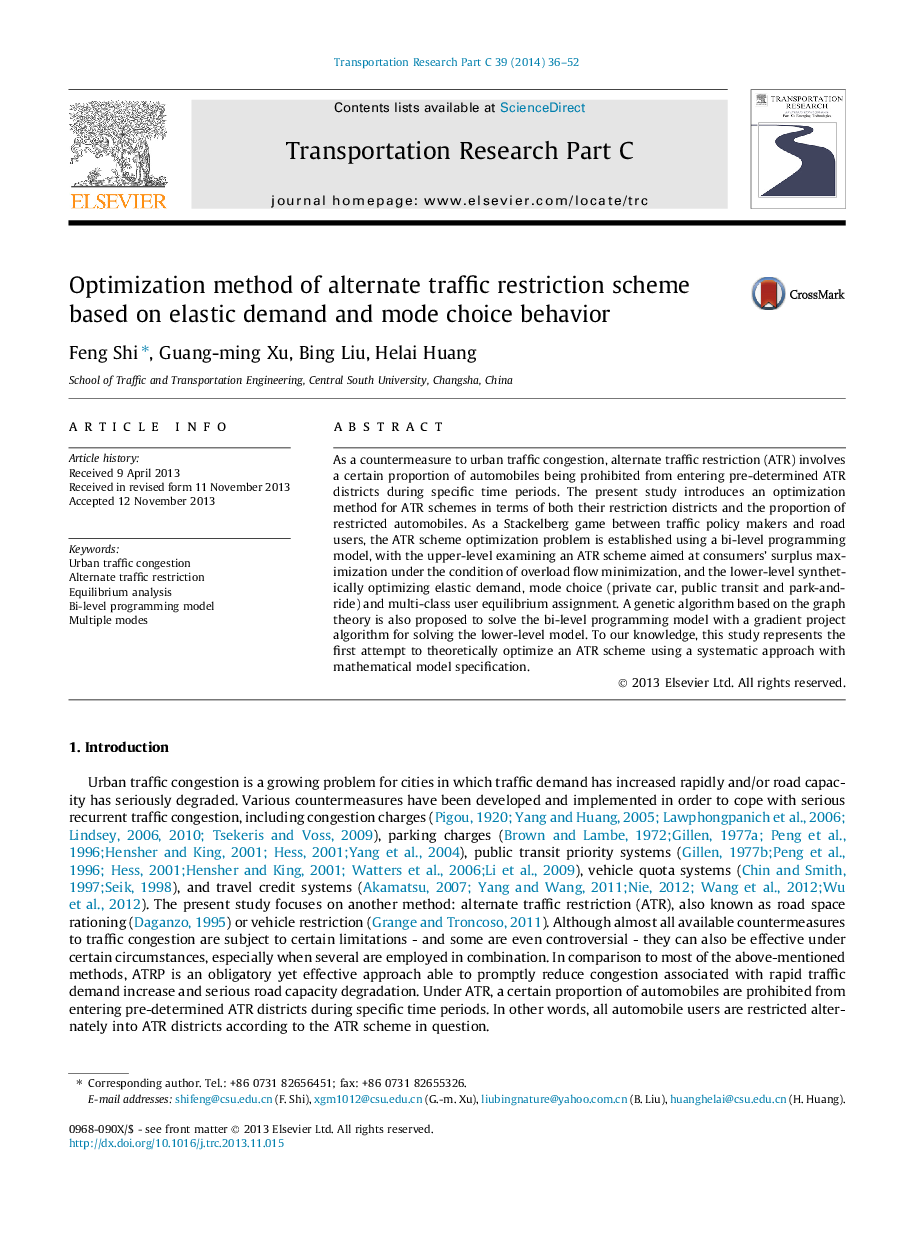| Article ID | Journal | Published Year | Pages | File Type |
|---|---|---|---|---|
| 524901 | Transportation Research Part C: Emerging Technologies | 2014 | 17 Pages |
•Proposed an optimization method for alternate traffic restriction (ATR) schemes.•Developed a network equilibrium model with ATR schemes.•Involved multiple modes including private car, public transit and park-and-ride.•Designed a genetic algorithm and a gradient project algorithm for solving the model.
As a countermeasure to urban traffic congestion, alternate traffic restriction (ATR) involves a certain proportion of automobiles being prohibited from entering pre-determined ATR districts during specific time periods. The present study introduces an optimization method for ATR schemes in terms of both their restriction districts and the proportion of restricted automobiles. As a Stackelberg game between traffic policy makers and road users, the ATR scheme optimization problem is established using a bi-level programming model, with the upper-level examining an ATR scheme aimed at consumers’ surplus maximization under the condition of overload flow minimization, and the lower-level synthetically optimizing elastic demand, mode choice (private car, public transit and park-and-ride) and multi-class user equilibrium assignment. A genetic algorithm based on the graph theory is also proposed to solve the bi-level programming model with a gradient project algorithm for solving the lower-level model. To our knowledge, this study represents the first attempt to theoretically optimize an ATR scheme using a systematic approach with mathematical model specification.
